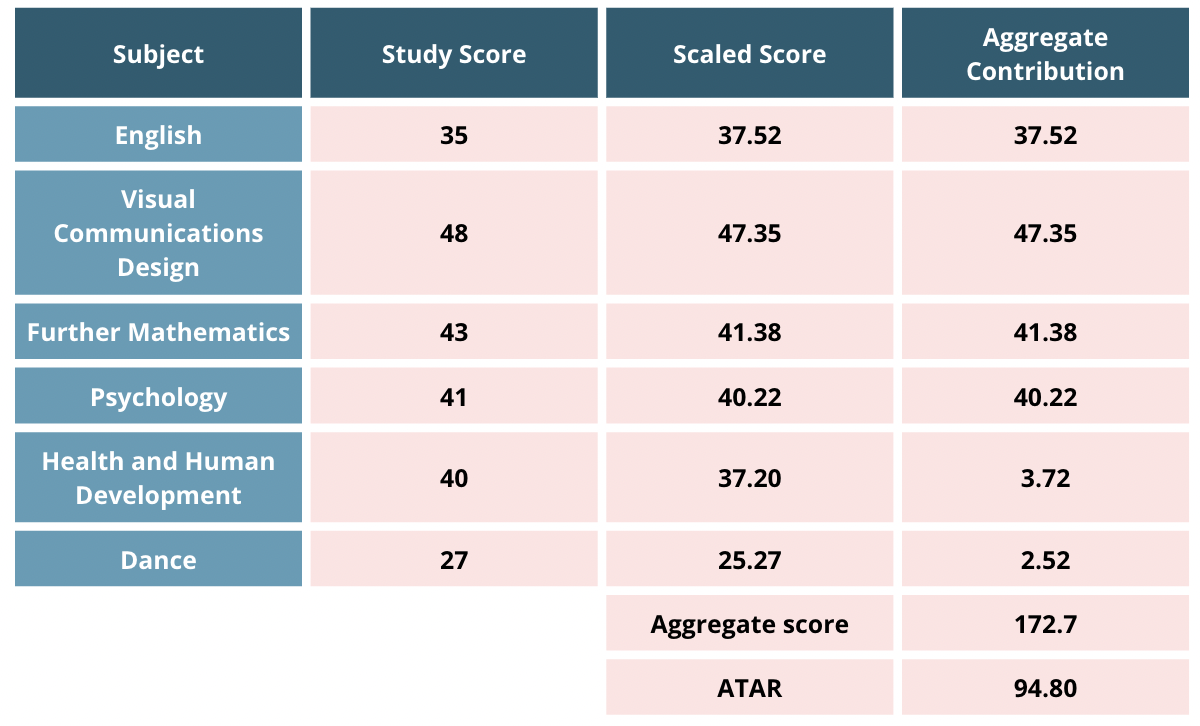1. What is the ATAR?
ATAR is short for “Australian Tertiary Admissions Rank” and is a percentile ranking that shows a student’s achievement relative to others student in a given cohort (ie. VCE or HSC). The ATAR has been adopted in Australia for use by universities to assess which students to make offers to for admission to a particular tertiary course (hence Australian Tertiary Admissions Rank).
On completing Year 12, students are issued a number (technically speaking, a “percentile rank“) that effectively states the percentage of students in a cohort (ie. VCE or HSC) that a student performed better than.
Students will be issued a score, or more technically a rank, between 0 and 99.95 and varies in increments of 0.05. An ATAR of 80.00 means that a student is in the top 20% of their cohort while an ATAR of 99.00 means a student is in the top 1% of their cohort and so on.
2. What is the highest ATAR score you can get?
The highest ATAR that you can achieve is 99.95, which effectively means that a student ranked better than 99.95% of students in their cohort.
3. What is the average ATAR score?
The average ATAR is usually around 70.00. This may seem counterintuitive, ie. why isn’t it closer to 50.00? This is because a cohort consists of students who may leave school early and not achieve an ATAR, which skews the average higher.
4. What is a good ATAR score?
What is considered a “good” ATAR is subjective and will vary student to student. What is considered a good ATAR to a student will likely depend on:
- a student’s academic record and ambitions and where they would be hoping to finish Year 12 relative to their peers; and
- what tertiary course a student wants to do post-year 12 and the minimum ATAR required to do that course at their ideal university.
5. What is the lowest ATAR score you can get?
ATAR scores are between 0 and 99.95, meaning a student can score 0. However, all scores below 30 are reported to students simply as “less than 30”.
6. How is the ATAR calculated?
The ATAR is calculated based on a student’s performance in their relevant Year 12 curriculum (ie. HSC, VCE, QCE, SACE, WACE, TCE, IB etc.).
Each State/Territory has its own method of finalising a student’s results for use in calculating ATAR, but generally the approach is the same – when a student finishes all of their Year 12 subjects, their respective marks for those subjects go through a process of review, moderation and scaling to accurately determine where that student performed relative to their peers. Generally speaking, a student’s marks will be considered, moderated and scaled based on:
- how that student’s school performed relative to other schools (to adjust for differences in how a school may grade or how difficult internal assessments were); and
- the relative difficulty of the subject completed and the ‘strength of competition’ in those subjects (you can refer to VTAC for more information about how scaling works).
Once this process has been complete, the aggregate of all of the student’s marks is calculated. Every student is then positioned based on their aggregate relative to their peers and a final rank (the ATAR) is issued to the student.
Worked example
In Victoria, ATAR is calculated based on a student’s aggregate which is calculated by:
- taking the student’s top 4 scaled scores (which must include an English or equivalent); and
- 10% of each of the student’s fifth and sixth scaled study scores (if they completed 5 or 6 subjects).

7. Why is the ATAR important? Is it important?
There is no right or wrong answer to this question. As we have already discussed, the ATAR is used by universities to determine which students to offer a place in their university to and in what order. So, if your ambition is to go to university, including a particular university and course, achieving the minimum ATAR usually required to be admitted to that course is important.
The ATAR requirements for university courses are generally determined based on the popularity of the courses ie. demand and supply. The more demand there is for a course the higher the ATAR cut-off will be for that course. In the last few years, COVID has seen international student arrivals fall, which has reduced demand and the ATAR requirements for many courses.
That said, universities now recognise that not everyone suited to do a course will come from the usual pathway of getting a certain ATAR or higher. Accordingly, most universities offer ‘alternate pathways’ for students who did not achieve a particular ATAR to still be admitted to study a course.
8. How do I achieve the ATAR I need?
Learnmate has resources to help, including a published guide How to Get the ATAR You Need as well as over 1,000 tutors who have either excelled at school or helped others to. We are here to help you.
9. A final comment on ATARs
While it may seem daunting, if it is any comfort, once you have gone beyond Year 12 and are at university, have gone down an alternate career path, or are well into your career, you will rarely hear people talk about their ATAR.
Once you have gotten into your course, few will want to talk about their ATAR after the first week or two. If you didn’t get into your course, there will likely be alternate pathways to study what you want to study.
Likewise, once you enter into the workforce it would be rare to find an employer or colleague interested in talking about what ATAR you got around the water cooler.
Lastly, if you’re looking for advice, study tips, tricks and resources to help you achieve the ATAR you need, checkout Learnmate’s free Study Timetable and guide on How to Achieve the ATAR You Need.
About Learnmate
Learnmate is a trusted Australian community platform that connects students who want 1:1 or small group study support, with tutors who are looking to share their skills and knowledge. From primary school to high school subjects — from science and maths to niche subjects like visual communication — Learnmate can help you improve academic performance or boost confidence, at your pace with the tutor that you choose.
We pride ourselves in offering a reliable and positive experience for both our students and tutors. Every tutor that joins the platform is vetted to meet a level of academic excellence, teaching qualification or relevant experience. All tutors are provided the opportunity to complete professional training.
Students and parents can easily find and screen for tutors based on their location, their subject results or skill level, and whether they provide in-person or online sessions. Learnmate is proud to provide tutors in Melbourne, Sydney, Geelong, Brisbane, Hobart, Canberra, Perth & Adelaide, and other locations.
